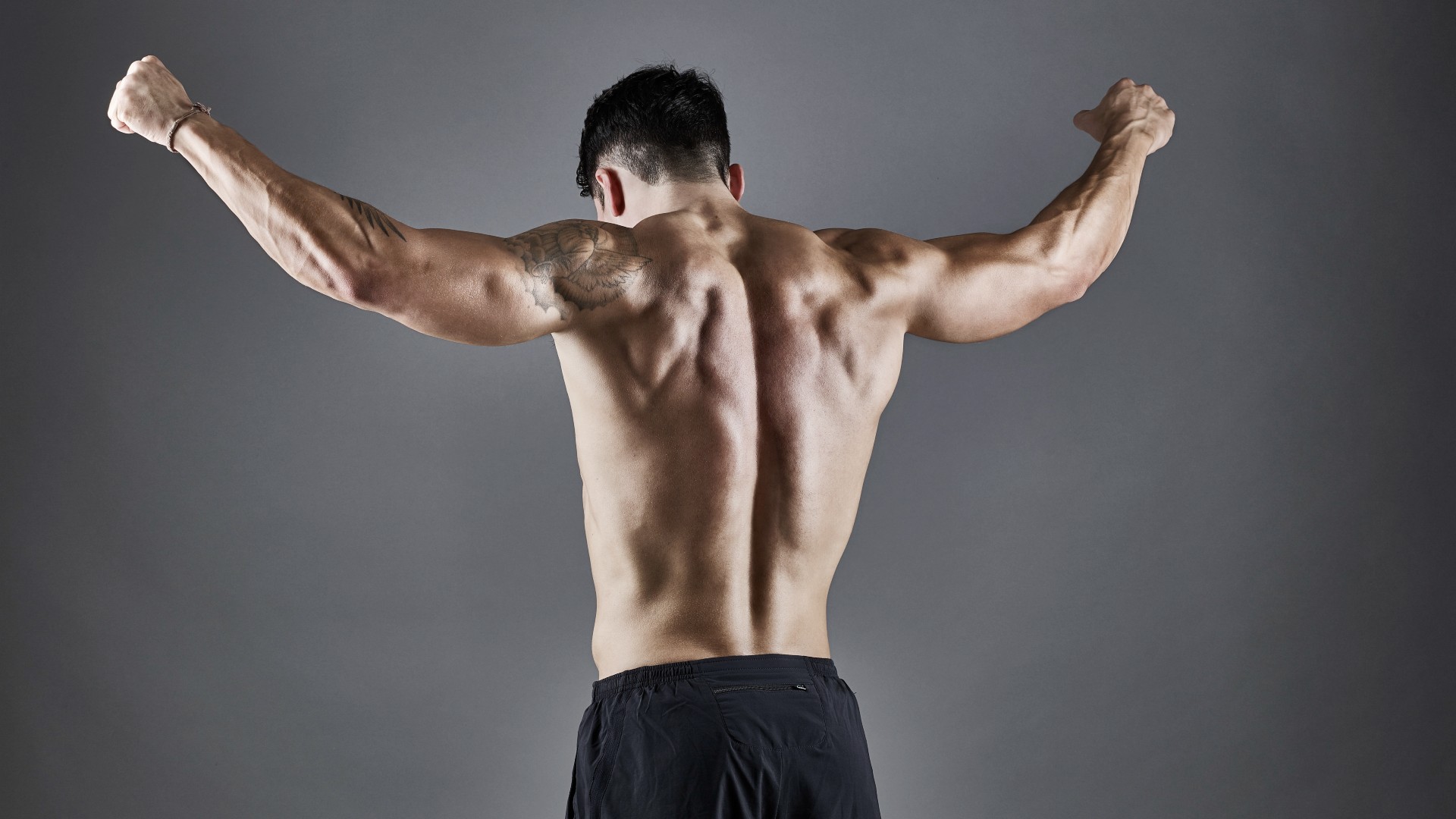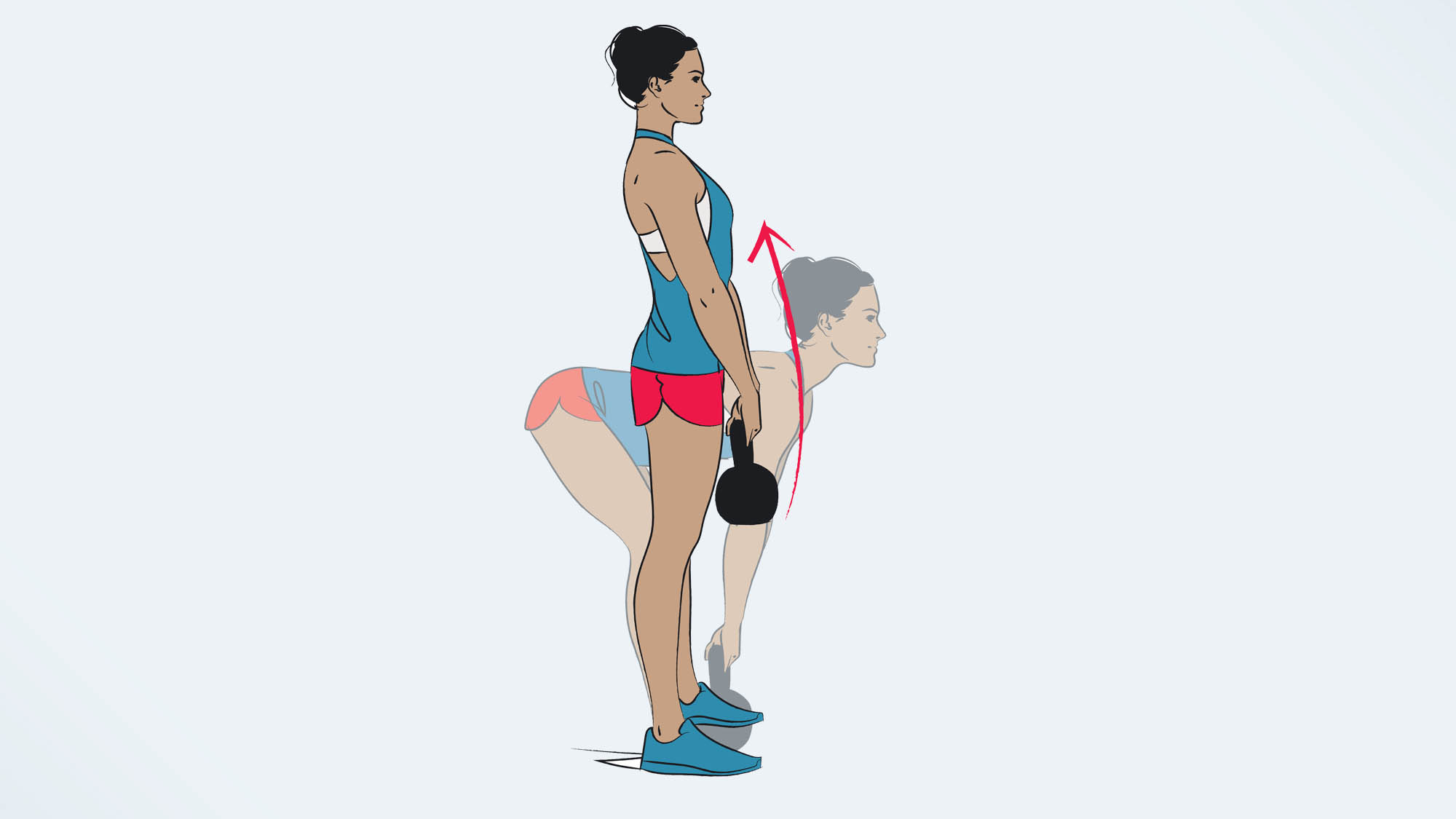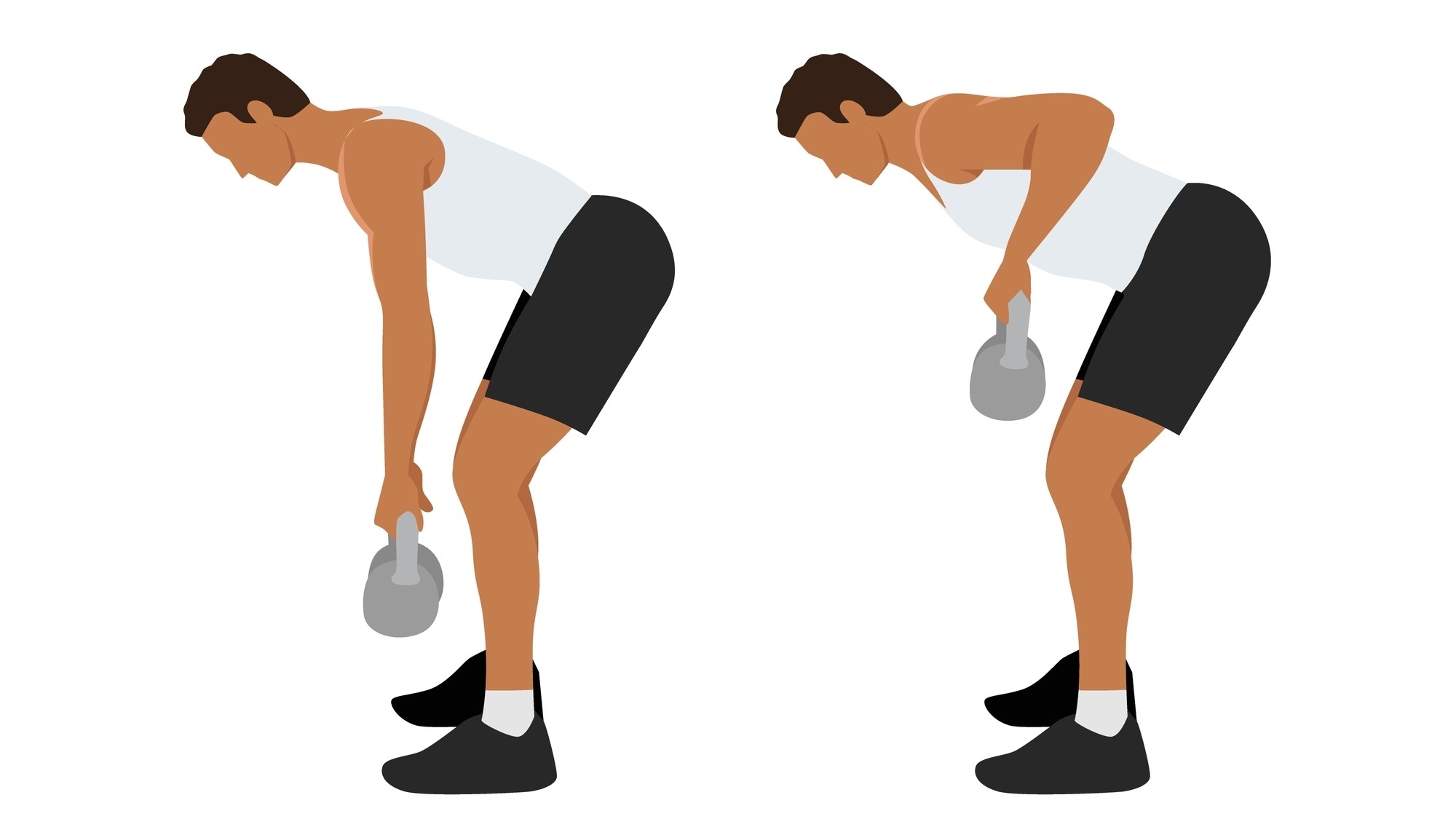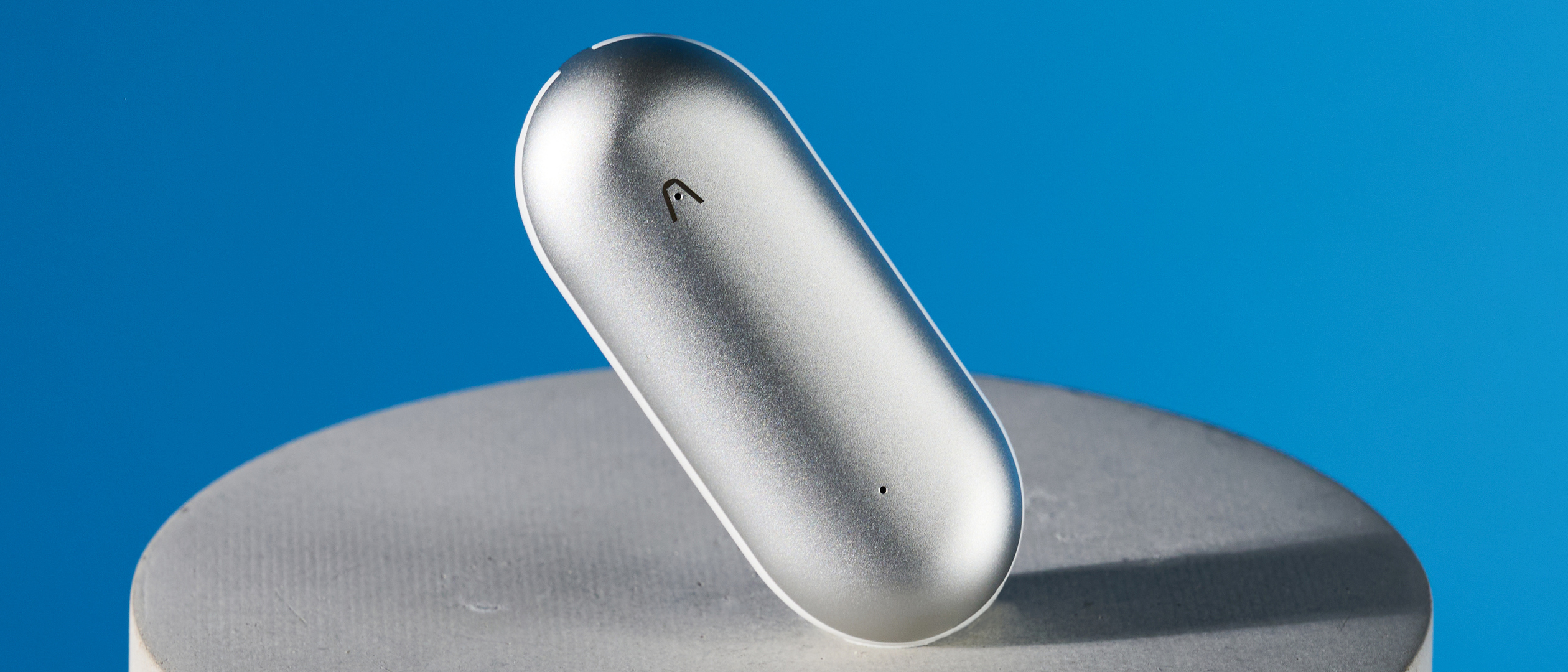
The best exercises for strengthening your back with kettlebells won't just chisel defined back muscles but make you a stronger athlete.
These five best kettlebell back exercises focus on movement patterns rather than isolating the muscle groups, so prioritize pulling motions and hip hinges — think deadlifts and rows, for example.
The five kettlebell exercises below are functional, which means they resemble the sorts of daily activities you might do like bending down to pick something up, and compound, which means they target more than one muscle group. Talk about bang for your buck.
We recommend the best kettlebells for weightlifting to maximize quality and grip, but either way, it’s time to pump and sculpt those back muscles with the five best kettlebell back exercises below.
What are the best kettlebell back exercises?
The best kettlebell back exercises tick the box for efficiency, hitting multiple muscle groups and joints at once. It’s the best way to exercise if you’re short on time, and you can always add isolation exercises at the end if you wish. Here’s a lowdown on isolation vs compound exercises to help you decide.
Next, we think back exercises should target, strengthen and build muscles in the lower, mid and upper back. That includes the stabilizer muscles responsible for keeping you safe from injury, like the erector spinae muscles hugging your spine.
Kettlebell movement patterns can be more complex and provide freer movement than dumbbells or barbells, so you can get to know your back muscles better and hit them hard.
Sign up to get the BEST of Tom's Guide direct to your inbox.
Get instant access to breaking news, the hottest reviews, great deals and helpful tips.
Here are the 5 best kettlebell back exercises for beginners and scaling options for advanced exercisers.
5 best kettlebell back exercises for building muscle definition and strength
1. Kettlebell deadlift

You could choose a single-arm deadlift or dual if you have two kettlebells. The deadlift hits the muscles in the posterior chain — the upper, mid and lower back, glutes and hamstrings. So you’re working a truckload of muscles using a hip hinge. It’s also functional, like picking something off the ground.
Deadlifts develop power, strength and muscle, and we rate them as the best compound exercise. Here’s how to deadlift with perfect form and why you should.
How:
- Start with one or two kettlebells between your legs and place your feet shoulder-width apart (or slightly wider)
- Softly bend the knees, lock them in place and engage your core
- Hinge forward at the hips, keeping your chest lifted, shoulders pulled back and hold your kettlebell(s) using an overhand grip
- Squeeze your back, then push your hips forward as you drive up to stand and squeeze your glutes at the top. Pause, then reverse the movement back down.
2. Single-arm kettlebell swing
Single-side loading helps improve balance, coordination and stability and can be more demanding on the body, especially the weaker muscle groups. Again, the hip hinge targets and strengthens your posterior chain.
If you adopt an American kettlebell swing (one for advanced exercisers), you can work your shoulders harder through an increased range of motion. For an extra challenge, hold a kettlebell in each hand. Here’s how to do a kettlebell swing.
How:
- Stand with feet shoulder-width apart and kettlebell between your legs.
- Softly bend your knees, lock them in place, engage your core and set your shoulders back and down.
- Grip the weight with one hand, then swing the kettlebell back between your legs, sending your hips behind you with a flat back
- As the kettlebell moves upwards, engage your glutes and snap your hips at the top with arms outstretched
- Drive the weight to shoulder height
- Allow the kettlebell to travel back down and between your legs.
3. Kettlebell clean
Again, utilizing a hip hinge movement pattern, the clean is often put firmly into the advanced corner, but it should be a staple exercise learned during kettlebell training. You’ll lift the kettlebell from the ground to a front rack position in one fluid movement. Cleans can be used during cardio training and engage the upper back and arms.
Learn how to hold a kettlebell properly to help maximize your power output.
How:
- Stand with your feet shoulder-width apart and place one kettlebell between your feet
- Grip the handle off center overhand and keep your back flat and stomach braced
- Lift your chest, then swing the kettlebell back slightly and pull it upward close to your midline
- Turn your arm under the bell to rest it in a racked position, with your elbow close to your ribs
- Avoid hitting the bell against your wrist. Reverse and repeat on the other side.
4. Kettlebell single-arm bentover row

So we’ve ticked off the hip hinges. Now let’s move on to the pulls. (Cleans also fall into that camp.) The bent-over single-arm row is a resistance exercise that works on control, contraction and muscle-building. You’ll engage your biceps, rear deltoids, mid-back and lats, and unlike a barbell row, you can work single-arm.
Beginners, you could place one hand on a bench or wall to help keep you stable as you row with one arm. Try one kettlebell or practice holding a kettlebell in each hand and alternate every rep.
How:
- Stand with feet wider than shoulder-width apart, toes pointed slightly outward
- Hinge forward at the hips and adopt a soft knee bend without squatting
- Keep your spine straight and back flat, then engage your core
- Start with the kettlebell in your left hand on the floor, using a neutral grip
- Pull the kettlebell toward your back pocket, squeezing your shoulder blades together
- Pause at the top of the pull, then lower the kettlebell to the floor. Repeat on the other side.
You’ll need to engage your core and prevent your body from turning to one side, which engages the deeper stabilizer muscles responsible for anti-rotation, like during the Pallof press.
5. Single-arm kettlebell high pull
Despite many trainers hailing the move as an advanced kettlebell exercise, I disagree. You’re only as good as your form, and I’ve seen beginners nail this one better than seasoned exercisers. You just need control and wrist strength.
This one provides a mid-upper back masterclass by pulling the weight toward you from a horizontal position. But we recommend starting very light and getting heavier as you progress.
How:
- Follow the steps above for the single-arm kettlebell swing
- As your arm reaches shoulder height, bend your elbow, pull the kettlebell toward you and squeeze your back
- Punch the kettlebell back out, then reverse back into the swing.
Benefits of kettlebell back workouts
The promise of sizzling 3D shoulders, sculpted ab muscles and toned pecs have people pushing their way to a stronger upper body. Push exercises target the triceps, anterior deltoids (the fronts of your shoulders) and pectoral muscles while pulls send focus toward the posterior chain muscles — muscles located down the back of the body.
Hello, back muscles. Namely, your trapezius, rhomboids, rear deltoids, erector spinae and latissimus dorsi.
Not only does a sculpted back look good, but building back strength, on a practical level, improves posture by counteracting the effects of sitting and hunching all day, protecting the spine.
You’ll need to balance pulling versus pushing exercises to help keep your body functioning properly without over-developing some muscle groups and under-developing others.
Back exercises also require more energy (your back muscles are big and powerful), which could help you burn more calories during workouts. And let’s not forget that regularly performing the best compound exercises could help cut V-shaped back muscles.
More from Tom's Guide

Sam Hopes is a level 3 qualified trainer, level 2 reiki practitioner and senior fitness writer at Tom's Guide. She is also currently undertaking her Yoga For Athletes training course. Sam has written for various fitness brands and websites over the years and has experience across brands at Future such as Live Science, Fit&Well, Coach, and T3.
Having worked with fitness studios like F45 and Virgin Active, Sam now primarily teaches outdoor bootcamps, bodyweight, calisthenics and kettlebells. She also coaches mobility and stretching-focused classes several times a week and believes that true strength comes from a holistic approach to training your body.
Sam has completed two mixed doubles Hyrox competitions in London and the Netherlands and finished her first doubles attempt in 1:11.
